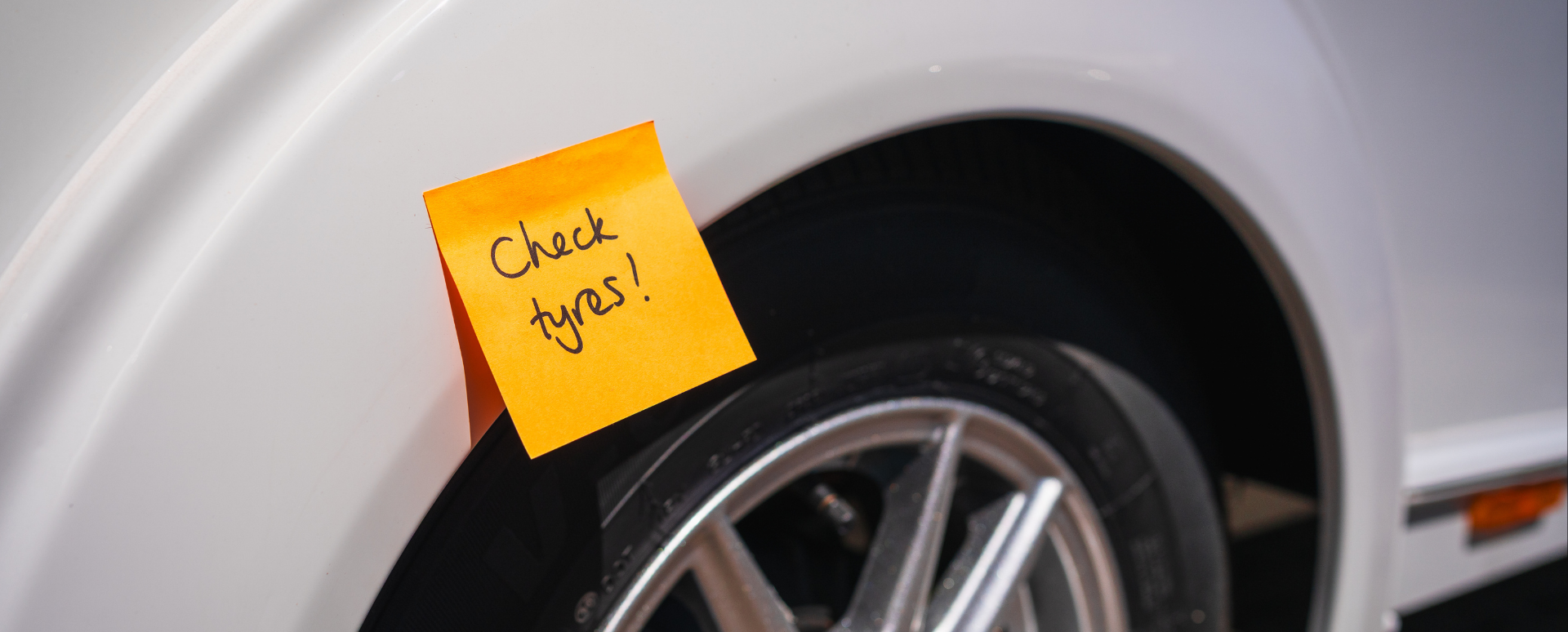Fleet Safety and the Importance of Looking After Tyres
29th Oct 2025
October is Tyre Safety Month, a national campaign focused on ensuring our tyres are safe and legal for modern driving needs, both for fleets and other road users. Often, we find tyres to be one of the most overlooked parts of vehicle maintenance and safety.
Tyres are an important part of fleet safety, operations, and performance, impacting everything from braking distance to fuel efficiency. For fleet operators, a well-maintained set of tyres doesn’t just protect their drivers and vehicles, but road users around them.
For fleets, the impact of tyres is beyond safety. Poorly maintained tyres are proven to reduce fuel efficiency, increase wear on other vehicle parts, and create further costs. The legal implications are severe. Driving with tyres below the legal tread depth of 1.6mm can result in fines that could top £2,500 per tyre and three penalty points. It’s the driver who will pay if not looked after.
Quick Tyre Check Tip – got a 20p coin? Use this to measure the tread depth quickly. A rule of thumb is that a hidden outer edge means you are good to go. Visible edges means a further inspection is needed and likely a new tyre.

How do worn tyres impact stopping distances?
The Highway Code outlines clearly the key rules for when driving, in wet weather, stopping distances are at least double, and in icy conditions; they can be up to ten times longer than in the dry.
Tyre tread depth plays a crucial role in this. Recent research found that at 50 mph, on a wet road, tyres at the legal limit of 1.6mm took around 37% longer to stop compared to tyres with 4mm of tread. Even when drivers react quickly, worn tyres reduce a vehicle's ability to disperse water, making it harder to control.
For fleet vehicles that may be carrying heavier loads, this impact is even larger. Added weight increases momentum; earning more distance is needed to come to a safe stop.
Winter Tyre Safety
With winter rapidly approaching, tyres naturally lose pressure as the days get colder; this loss will impact grip, braking, and wear.
It’s important for fleets of all shapes and sizes to schedule seasonal checks, ensuring every vehicle leaves its home with the right amount of tread depth, correct inflation, and no hidden damage.
We recommend that tyres be replaced when the tread reaches 2mm rather than waiting for the legal limit to maintain effective performance and reduce vehicle off-road time.
Electric Vehicles and how tyres are different
Electric Vehicles (EV) offer a different drive to more traditional petrol and diesel vehicles, and this impacts tyres more than you may expect. EVs are usually heavier than an ICE (internal combustion engine) equivalent, with potential additional stress being put onto tyres because of this, and the instant power that comes from them.
Recent research shows the first change on an EV occurs on average, 6,350 miles sooner than on a fuel-powered equivalent. EV specific tyres also tend to be larger and more expensive, meaning maintaining them is all the more important for fleets nationwide.
The investment in EV-specific tyres with reinforced sidewalls and optimised rubber can support efficiency and longevity.
How can your fleet reduce risk and vehicle off-road time?
To support an efficient fleet, we recommend that tyre care be a proactive measure that forms the backbone of a fleet’s operation. These steps can make a difference:
- Regular inspections – run sessions with drivers to check tread depth, inflation, and damage
- Proactive Replacement – changing tyres below 2mm tread, especially during winter months
- Driver training – use the resources available on TyreSafe.
- Physical tools – we provide our fleets with tyre tread depth checkers, which drivers can put on their keyrings, so there is no doubt over depth
- Fleet Data – monitor tyre performance using telematics data
- Use quality tyres – invest in premium or EV tyres where appropriate, look for an A-C rating on the labels.





